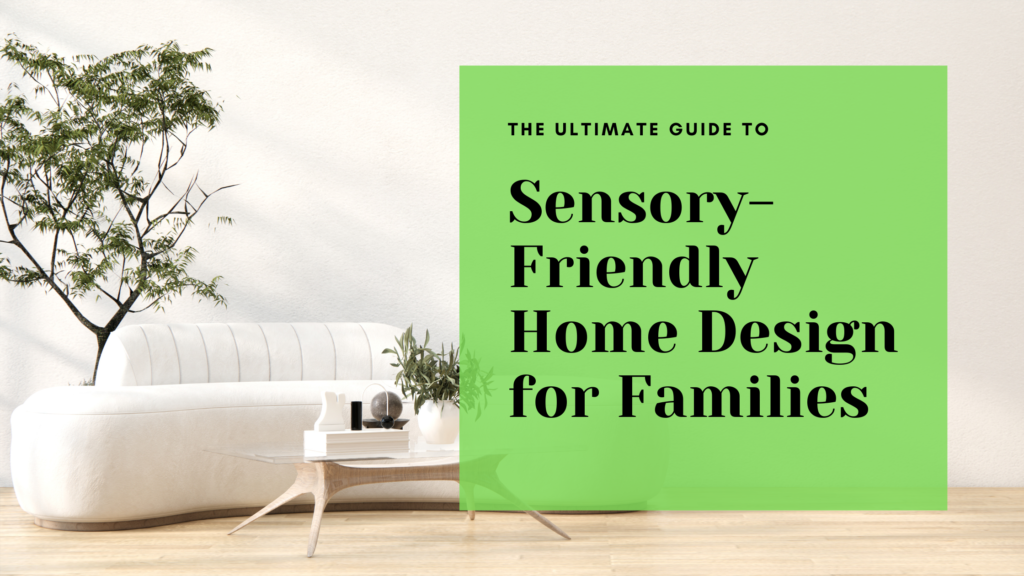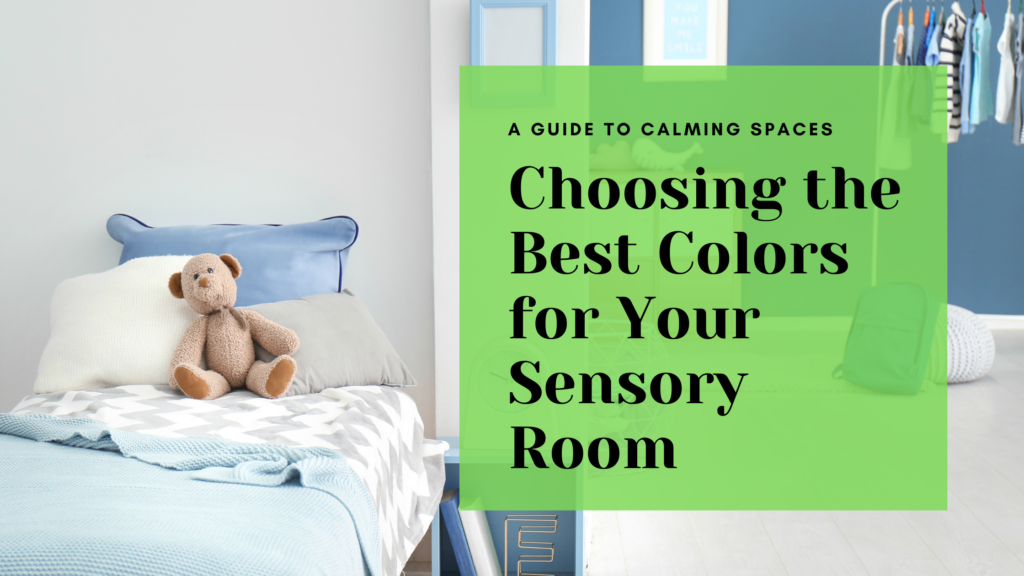I. Introduction
Introduction to Sensory Rooms
Sensory rooms, also known as multi-sensory environments, are specially designed spaces that provide a controlled sensory experience for individuals, particularly those with autism and other sensory processing disorders. These rooms are carefully crafted to include a variety of sensory inputs—visual, auditory, tactile, and more—allowing users to engage their senses in a safe, calming environment. The design of these rooms is rooted in the understanding that individuals with autism often experience the world differently, sometimes finding certain stimuli overwhelming while others may be under-stimulating.
Why Sensory Rooms are Essential for Individuals with Autism
Sensory rooms have gained popularity in both homes and educational settings as their benefits become increasingly recognized. These rooms help individuals with autism by providing a space where they can manage sensory overload, reduce anxiety, and improve focus. For many, sensory rooms offer a therapeutic escape, where the combination of carefully chosen sensory tools can soothe and regulate the nervous system, leading to improved emotional and physical well-being. The rise in the use of sensory rooms reflects a growing awareness of the importance of catering to the sensory needs of individuals with autism, making these spaces essential for enhancing their quality of life.
Purpose of the Article
In this article, we will explore the top 10 sensory room products that are crucial for creating an effective and calming environment for individuals with autism. Whether you are setting up a sensory room at home or in a school, this curated list will guide you through selecting the best products to meet the diverse sensory needs of those with autism, ensuring that your sensory room is both functional and therapeutic.
II. The Importance of Choosing the Right Sensory Room Products
Understanding Sensory Needs
Individuals with autism may have unique sensory needs, which can vary greatly from one person to another. Some may be hypersensitive to stimuli, where certain sounds, lights, or textures can be overwhelming, while others may be hyposensitive, seeking out more intense sensory experiences. Understanding these sensory needs is critical when choosing products for a sensory room. For example, visual stimulation can be either calming or distressing depending on the individual, so selecting the right lighting and visual tools is key. Similarly, tactile inputs through textured materials can provide comfort to some, while being bothersome to others.
Factors to Consider When Choosing Products
When selecting products for a sensory room, safety should be the top priority. Items should be durable, non-toxic, and designed to withstand frequent use. Sensory engagement is another important consideration, as the effectiveness of a sensory room depends on the ability of the products to provide the right kind of stimulation or relaxation. Ease of use is also crucial, especially for caregivers or educators who may need to quickly set up or adjust the room to meet the needs of the user.
Benefits of High-Quality Sensory Room Products
Investing in high-quality sensory room products can greatly enhance the room’s effectiveness. Well-designed products are more likely to meet the sensory needs of individuals with autism, leading to better outcomes such as reduced anxiety, improved focus, and a greater sense of calm. Moreover, high-quality products are generally safer, more durable, and more reliable, ensuring that the sensory room remains a valuable resource for years to come.
III. The Top 10 Sensory Room Products
1. Weighted Blankets
Overview: Weighted blankets are heavy blankets filled with materials such as glass beads or plastic pellets, designed to provide deep pressure stimulation. This type of stimulation mimics the feeling of being held or hugged, which can be extremely calming.
Why Essential: For individuals with autism, weighted blankets can help reduce anxiety, improve sleep quality, and provide a sense of security. The deep pressure input helps regulate the nervous system, promoting relaxation.
Tips for Selection: Choose a weighted blanket that is about 10% of the user’s body weight. Ensure the material is soft and comfortable, as some individuals may have tactile sensitivities. It’s also important to select a blanket that is easy to clean and durable.
2. Sensory Swings
Overview: Sensory swings come in various types, such as cuddle swings, platform swings, and hammock swings. These swings provide vestibular input, which is the sense of balance and spatial orientation.
Why Essential: Sensory swings are essential in a sensory room because they can be both calming and stimulating, depending on the movement. They are particularly beneficial for individuals who need vestibular input to help regulate their sensory system.
Tips for Selection: When choosing a sensory swing, consider the available space and ensure the swing can be safely installed. Look for swings with sturdy construction and safety features like secure harnesses or reinforced seams.
3. Bubble Tubes
Overview: Bubble tubes are tall, cylindrical tubes filled with water and air, which produce a continuous stream of bubbles. Often accompanied by changing lights, they provide visual and auditory stimulation.
Why Essential: Bubble tubes offer a mesmerizing visual experience that can have a calming effect. The gentle sound of bubbles can also contribute to a soothing environment, making them a favorite in sensory rooms.
Tips for Selection: When selecting a bubble tube, consider the size of the room and the height of the tube. Look for models with adjustable lighting options and easy maintenance features, such as accessible water reservoirs.
4. Noise-Cancelling Headphones
Overview: Noise-cancelling headphones are designed to reduce unwanted ambient sounds, allowing the user to focus or relax without being disturbed by external noise.
Why Essential: For individuals with autism, who may be sensitive to sounds, noise-cancelling headphones can be crucial. They help create a quiet, controlled environment, which is especially useful in noisy settings or during moments of overstimulation.
Tips for Selection: Choose headphones that are comfortable to wear for extended periods. Consider features such as battery life, noise reduction levels, and whether they are wireless or wired based on the user’s preference.
5. Tactile Wall Panels
Overview: Tactile wall panels are designed to engage the sense of touch, featuring various textures and materials that users can explore with their hands.
Why Essential: Tactile stimulation can be both calming and engaging for individuals with autism. These panels provide a safe way to satisfy the need for tactile input, which is important for sensory regulation.
Tips for Selection: Opt for panels that offer a variety of textures to cater to different tactile preferences. Ensure the panels are securely mounted and made from safe, non-toxic materials.
6. Soft Play Mats
Overview: Soft play mats provide a cushioned surface for movement and play, essential for physical activity in a sensory room.
Why Essential: These mats not only offer a safe area for physical play but also serve as a sensory exploration space, where individuals can experience different textures and sensations.
Tips for Selection: Choose mats that are easy to clean and durable. Consider the thickness and size of the mat to ensure it provides adequate cushioning and covers the necessary area.
7. Light Projectors
Overview: Light projectors can display moving lights, stars, or other visual effects on the walls and ceiling, creating a visually stimulating environment.
Why Essential: Visual stimulation is a key component of sensory rooms, and light projectors can create a calming or engaging atmosphere, depending on the needs of the individual.
Tips for Selection: Look for projectors with adjustable brightness and color options. Some projectors also offer timer settings, which can be useful for managing the duration of visual input.
8. Sensory-Friendly Seating
Overview: Sensory-friendly seating, such as bean bags or inflatable chairs, provides a comfortable and supportive place to sit, often offering proprioceptive feedback.
Why Essential: Creating a cozy, safe space for relaxation is important in a sensory room. Sensory-friendly seating can help individuals feel secure and grounded, promoting relaxation and comfort.
Tips for Selection: Consider the material and size of the seating. It should be durable, easy to clean, and provide enough support for the user.
9. Aromatherapy Diffusers
Overview: Aromatherapy diffusers disperse essential oils into the air, creating a calming or invigorating environment through scent.
Why Essential: Aromatherapy can have a powerful effect on mood and relaxation. Scents like lavender or chamomile are known for their calming properties, making them ideal for a sensory room.
Tips for Selection: Choose diffusers that are easy to clean and have settings to control the intensity and duration of the scent. Ensure that the essential oils used are safe for the individual and the environment.
10. Interactive Sensory Panels
Overview: Interactive sensory panels combine lights, sounds, and textures to engage multiple senses at once, making them versatile tools in a sensory room.
Why Essential: These panels cater to various sensory needs, providing a rich, multi-sensory experience that can be both stimulating and soothing.
Tips for Selection: Look for panels that offer customization options to adjust the sensory inputs according to the user’s preferences. Ensure the panels are safe, durable, and easy to operate.
IV. Tips for Setting Up and Organizing Your Sensory Room
Planning Your Space
When setting up a sensory room, it’s important to plan the layout carefully. Consider the flow of the room and how each product will be used. Ensure there is enough space for movement, particularly if you are including items like sensory swings or large soft mats. The goal is to create a balanced environment where different sensory inputs can be accessed without overwhelming the user.
Incorporating a Variety of Sensory Inputs
A well-designed sensory room should address multiple sensory needs, including visual, auditory, tactile, and proprioceptive inputs. By incorporating a variety of sensory products, you can create a more comprehensive and effective space that caters to the diverse needs of individuals with autism.
Safety Considerations
Safety is paramount when setting up a sensory room. Ensure that all products are securely installed, especially those that involve movement, like swings or heavy equipment. Use non-toxic materials and avoid small parts that could pose a choking hazard. Regularly check the room and the products for wear and tear, and address any issues promptly to maintain a safe environment.
Maintaining and Updating Your Sensory Room
A sensory room requires regular maintenance to remain effective. Keep the room clean and organized, and periodically update or replace products as needed. As the sensory needs of the user may change over time, be prepared to adapt the space accordingly, adding or removing items to better suit their current needs.
V. Conclusion
Recap of Key Points
Choosing the right sensory room products is essential for creating an effective autism-friendly space. Each of the products discussed plays a crucial role in providing the sensory inputs needed to help individuals with autism manage sensory processing issues, reduce anxiety, and improve overall well-being.
Encouragement to Start Creating or Enhancing a Sensory Room
Whether you are just starting to create a sensory room or looking to enhance an existing one, the products and tips provided in this article will help you design a space that meets the unique sensory needs of individuals with autism.
Explore the recommended products, consult with professionals if needed, and share your experiences in creating sensory-friendly spaces. With the right tools and thoughtful planning, you can create a sensory room that truly enhances the lives of those who use it.


